Dive into the diversity of Tillandsia with our guide to air plant varieties. Learn about different species and how to care for these unique plants.
Air plants, known scientifically as Tillandsia, are fascinating plants that don’t need soil to grow. These unique plants come in many shapes and sizes, making them popular among plant lovers. Let’s explore the world of air plant varieties and learn how to care for these interesting plants.
Here’s a chart with information about Air Plants (Tillandsia spp.):
| Category | Information |
|---|---|
| Botanical Name | Tillandsia spp. |
| Common Name | Air Plants |
| Plant Type | Epiphytic perennial |
| Hardiness Zone | USDA Zones 9-11 (can be grown indoors in any zone) |
| Sun Exposure | Bright, indirect light; can tolerate some direct sunlight |
| Soil Type | No soil needed; can be mounted on various surfaces |
| Watering | Mist 2-3 times a week or soak in water for 20-30 minutes once a week |
| Growth Habit | Rosette, clumping |
| Height/Spread | 2-12 inches tall, 2-12 inches wide, varies by species |
| Special Features | Unique growth habit without soil, various shapes and sizes, low maintenance, suitable for indoor growing, air purifying, produces colorful blooms in some species |
What Are Air Plants?
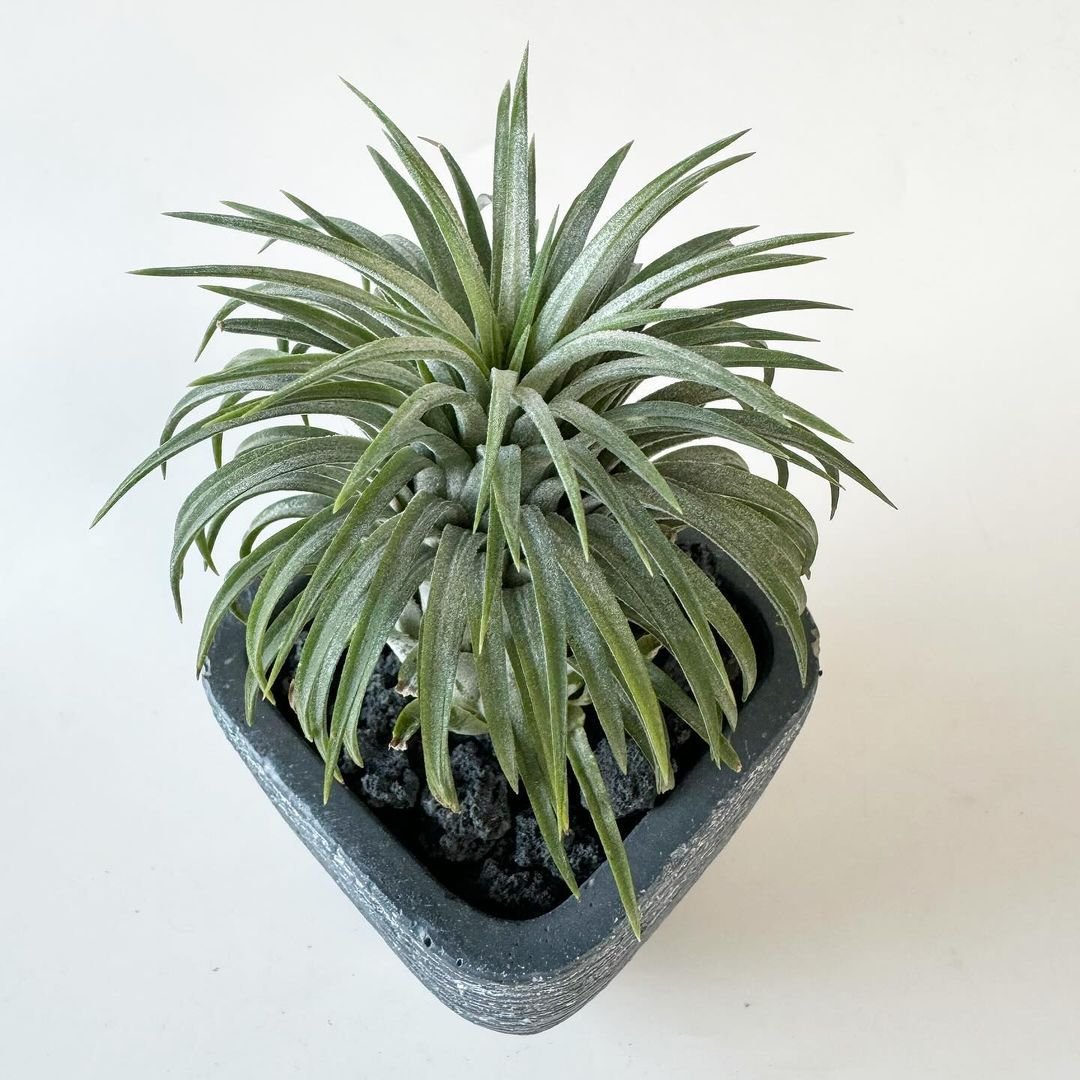
Air plants are part of the Bromeliad family. They grow naturally in trees and on rocks in warm parts of North and South America. These plants don’t need soil because they get water and nutrients from the air through special structures on their leaves called trichomes.
Air plants are epiphytes, which means they grow on other plants without harming them. In nature, you might find them hanging from tree branches or clinging to rocks. This unique way of growing makes them perfect for creative displays in homes and offices.
Popular Air Plant Varieties
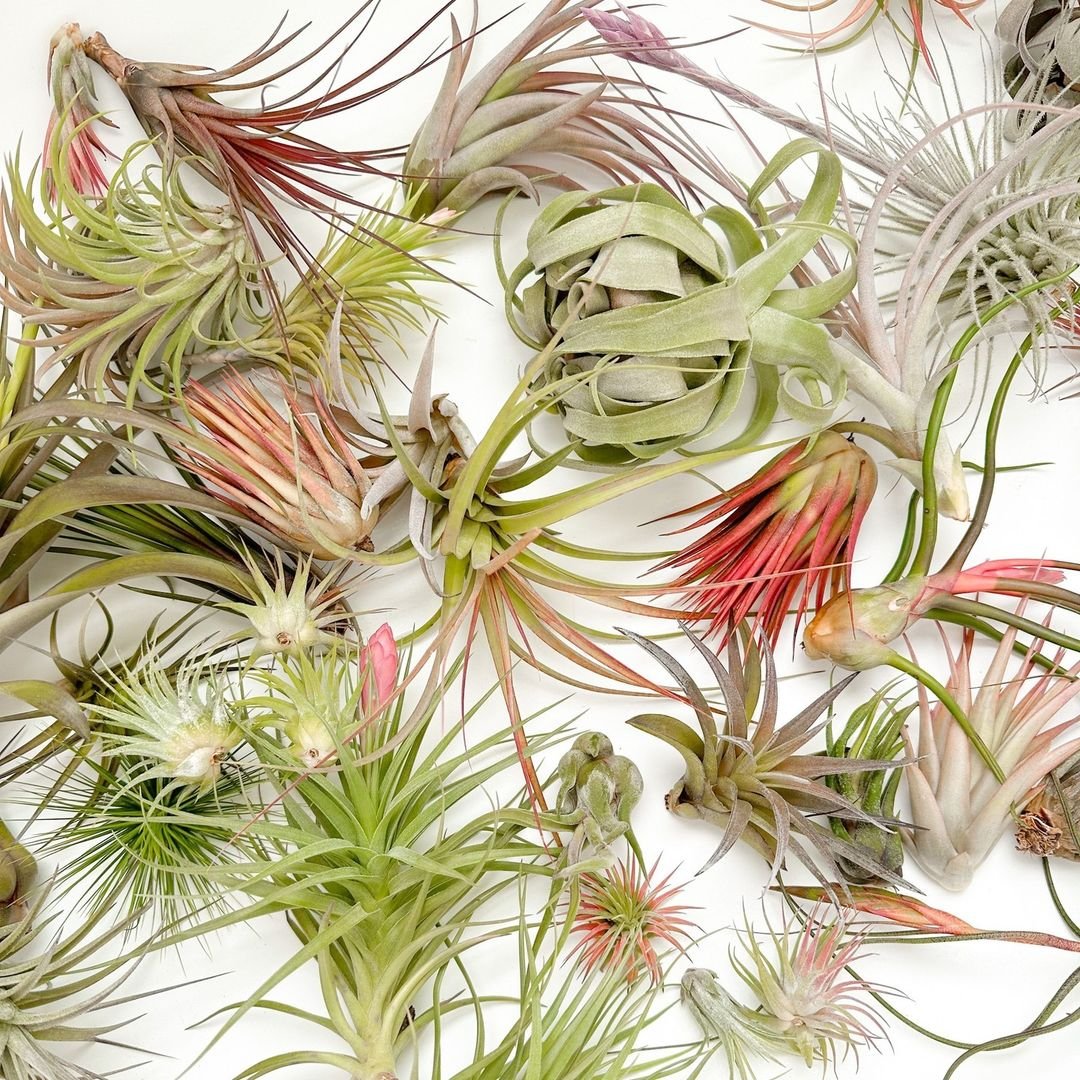
There are hundreds of Tillandsia species, each with its own unique look. Here are some popular varieties you might want to try:
1. Tillandsia ionantha (Sky Plant)
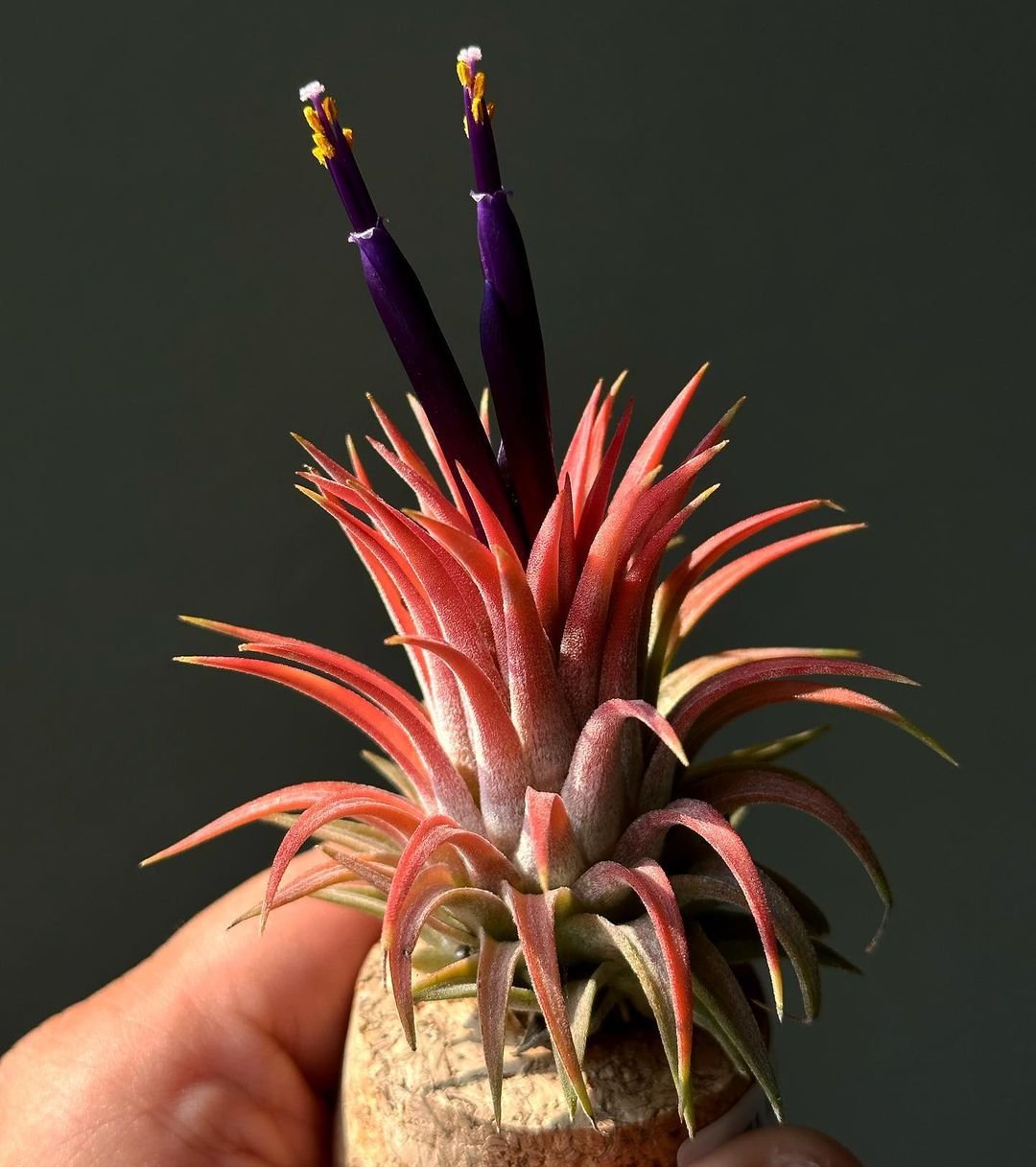
This small air plant is perfect for beginners. It has thin, pointed leaves that turn bright red when it’s about to bloom. The Sky Plant is tough and easy to care for.
2. Tillandsia xerographica (Queen of Air Plants)
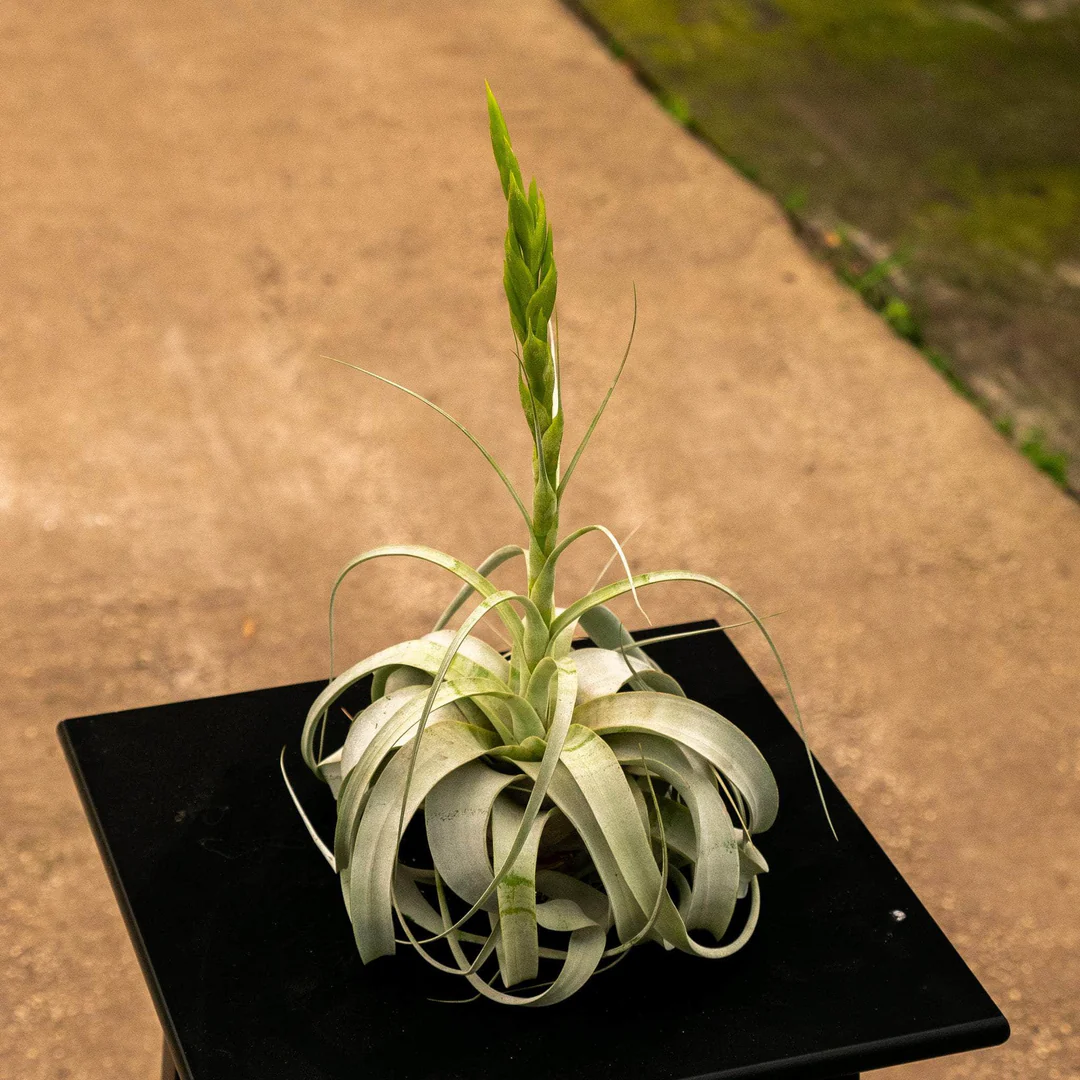
This large air plant has wide, silvery-gray leaves that curl into a rosette shape. It’s slow-growing but can get quite big over time.
3. Tillandsia caput-medusae (Medusa’s Head)
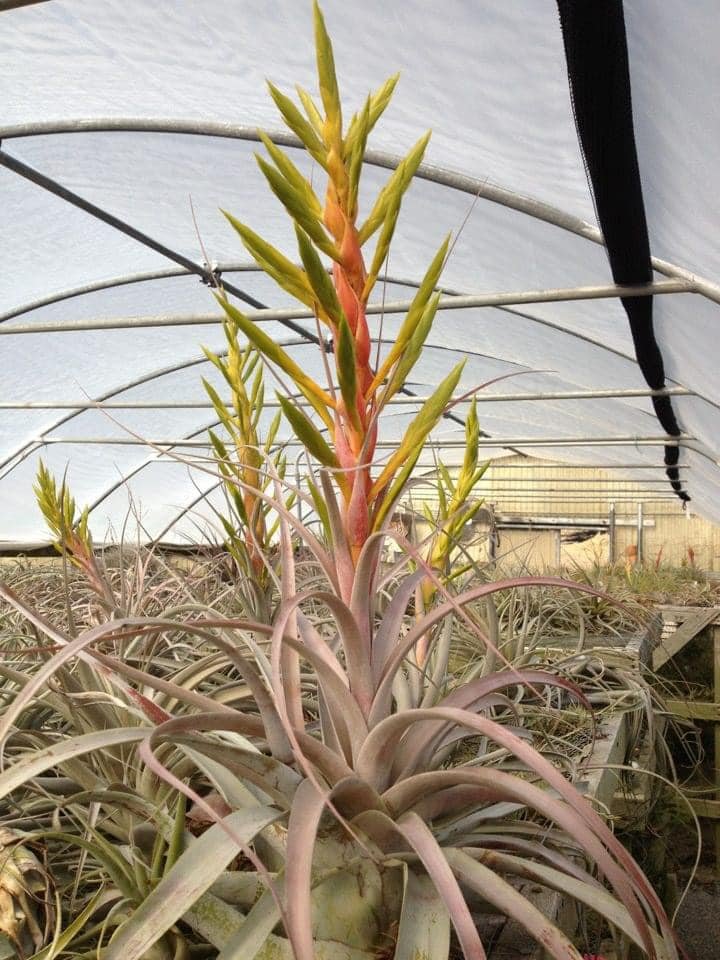
Named after the Greek myth, this air plant has curly, snake-like leaves. It’s a medium-sized plant that often produces purple flowers.
4. Tillandsia bulbosa (Bulbous Air Plant)
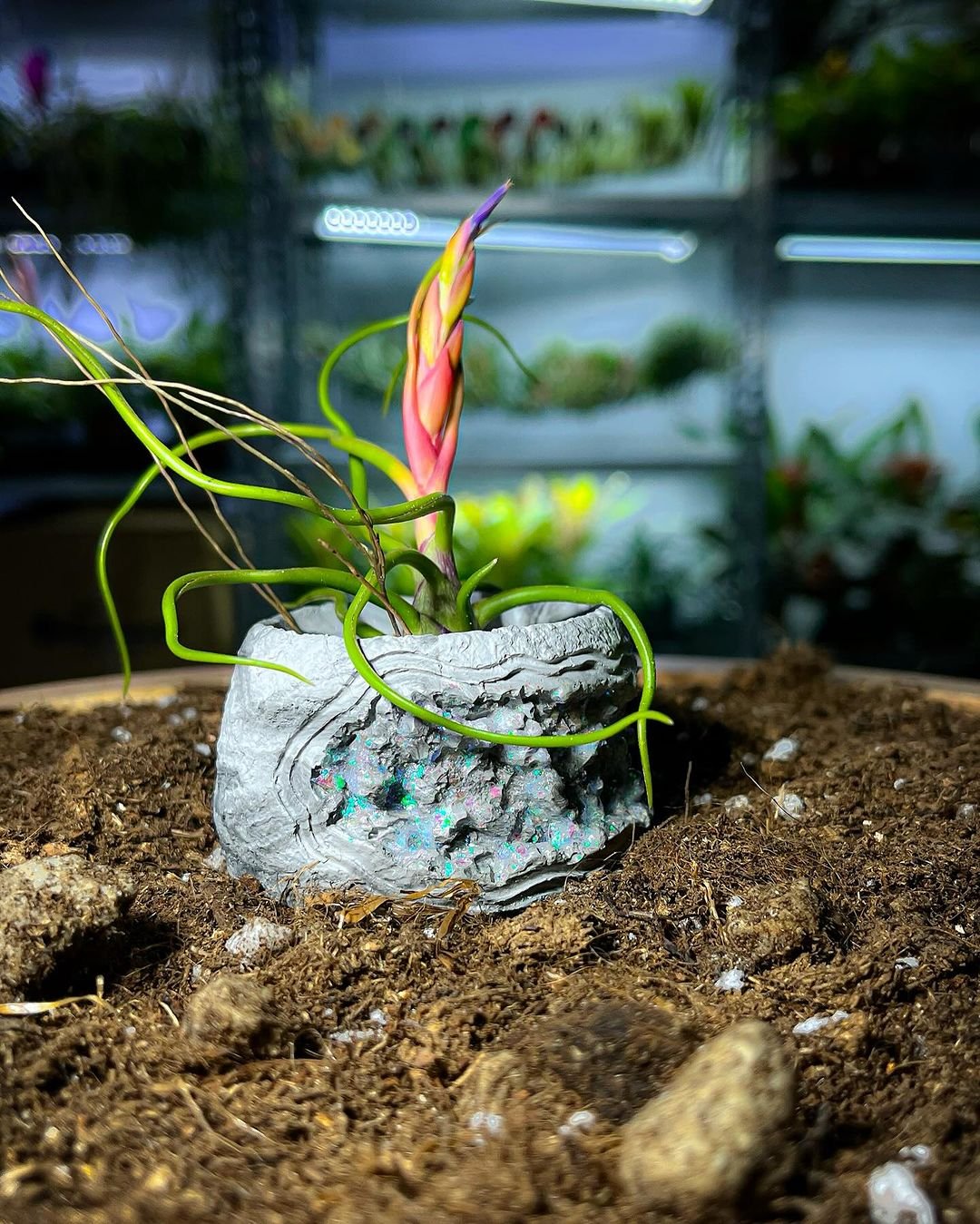
This unique air plant has a bulb-like base and thin, curly leaves. It’s small but eye-catching.
5. Tillandsia tectorum (Snowball Tillandsia)
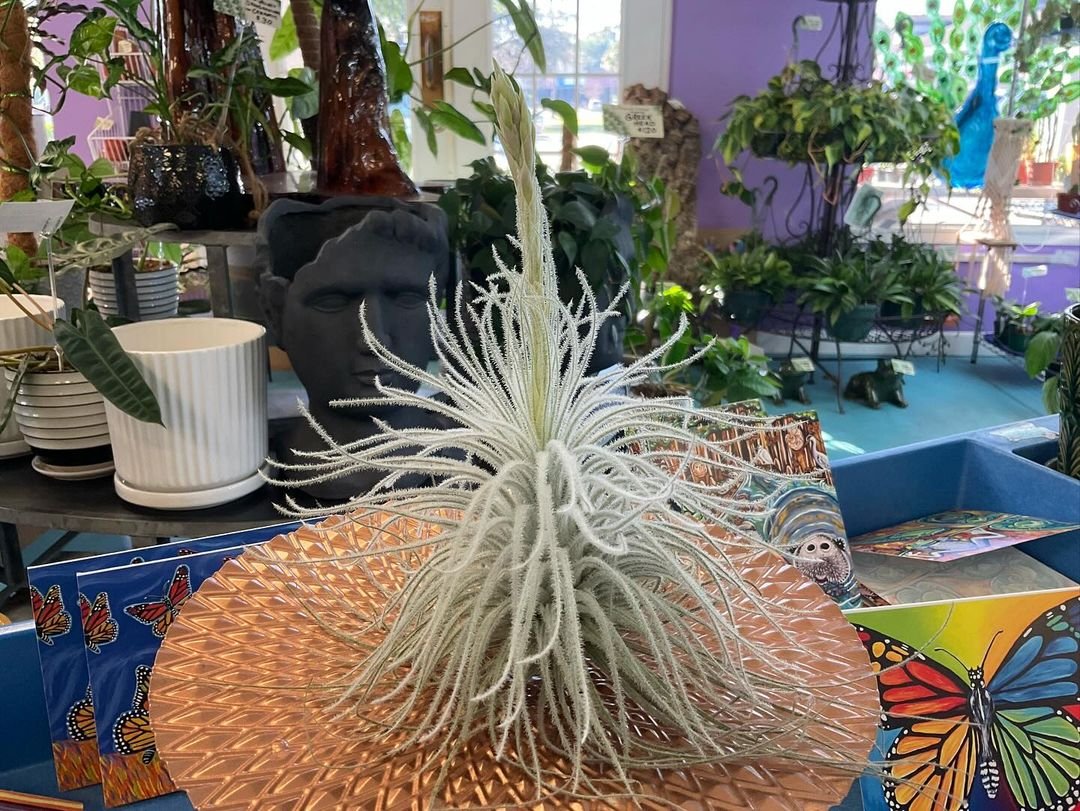
This fuzzy air plant looks like it’s covered in soft, white fur. It’s great for dry environments.
Caring for Air Plants
Air plants are generally easy to care for, but they do have some specific needs:
- Light: Air plants like bright, indirect light. Too much direct sun can burn their leaves.
- Water: Soak your air plants in water for about 30 minutes once a week. Make sure to shake off excess water to prevent rot.
- Air circulation: Good air flow helps air plants dry quickly after watering and prevents disease.
- Temperature: Most air plants prefer warm temperatures between 50-90°F (10-32°C).
- Fertilizer: Use a bromeliad fertilizer diluted to 1/4 strength once a month during the growing season.
Displaying Air Plants
One of the best things about air plants is how versatile they are for decorating. Here are some creative ways to show off your air plants:
- Glass terrariums: Hang glass globes with air plants inside for a modern look.
- Driftwood mounts: Attach air plants to interesting pieces of wood for a natural display.
- Wire frames: Create geometric shapes with wire and nestle air plants inside.
- Seashells: Place small air plants in large seashells for a beachy vibe.
- Living walls: Make a vertical garden using different air plant varieties.
Common Problems and Solutions
Even though air plants are tough, they can sometimes have issues:
- Brown or crispy leaves: This usually means the plant is too dry. Try watering more often or moving it to a more humid spot.
- Soft, black base: This is a sign of rot, often caused by water sitting in the center of the plant. Make sure to shake off excess water after soaking.
- Wrinkled or rolled leaves: The plant might be thirsty. Try soaking it for a bit longer.
- Pale leaves: This could mean the plant needs more light or nutrients. Try moving it to a brighter spot or fertilizing.
Propagating Air Plants
Air plants are easy to propagate. They produce small offsets called “pups” that you can separate from the mother plant when they’re about 1/3 to 1/2 the size of the parent. Gently pull the pup away from the mother plant and care for it as you would an adult air plant.
Air Plants in Nature
In their natural habitats, air plants play important roles in ecosystems. They provide homes for small animals like frogs and insects. Some air plants even have special relationships with ants, forming ant gardens.
Air plants are also important to some bird species. The Montezuma Oropendola, a large blackbird from Central America, uses Tillandsia to build its nests.
Air plants are fascinating and diverse. From the tiny Tillandsia ionantha to the impressive Tillandsia xerographica, there’s an air plant for every taste and space. By understanding their needs and providing the right care, you can enjoy these unique plants in your home or office.
Remember, each air plant variety has its own charm and quirks. Don’t be afraid to try different species and find your favorites. With a little attention and care, your air plants will thrive, adding a touch of green to your space without the need for soil or traditional pots.
Whether you’re a seasoned plant enthusiast or a beginner looking for an easy-to-care-for plant, air plants offer a world of possibilities. So why not start your Tillandsia collection today and discover the amazing diversity of these soil-free wonders?

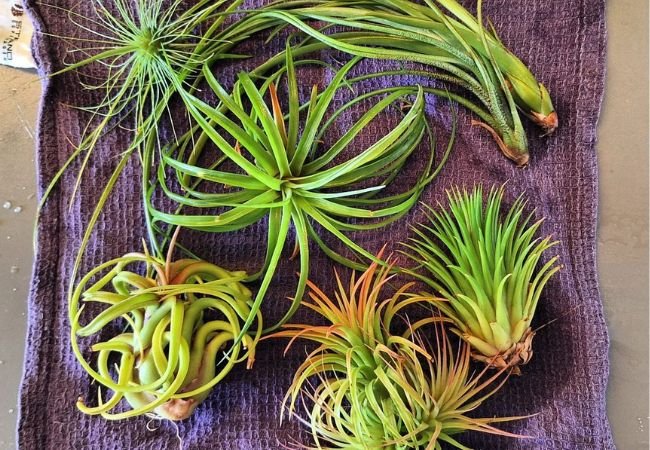






Leave a Reply